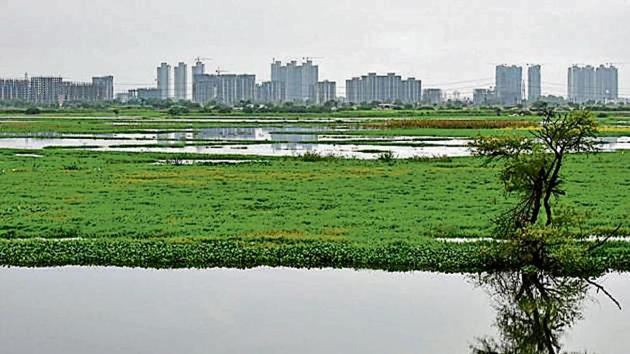Fine on illegal disposal of sewage in Najafgarh drain
As per the GMDA report, put on its website on December 31, at least 80 million litres of untreated sewage flows directly into Gurugram’s stormwater drains every day, polluting rivers, damaging underground water table, posing a huge health hazard to the nearby population and triggering urban floods every monsoon.
The Gurugram Metropolitan Development Authority (GMDA), on Thursday, directed its enforcement team to penalise offenders illegally discharging untreated sewage into city’s stormwater drains that flow directly into the Yamuna river and pollute its water.

The directive comes three days after the National Green Tribunal (NGT)-appointed principal monitoring committee reviewed GMDA’s performance and expressed concern over the agency’s failure to check sewage discharge into Yamuna river through Najafgarh drain.
Najafgarh is one of the four main drains identified as the biggest polluters of the Yamuna, with the other three being Najafgarh Supplementary, Shahdara and Barapullah drains.
GMDA’s chief engineer Lalit Arora, chief executive officer V Umashankar and Municipal Corporation of Gurugram (MCG) commissioner Yashpal Yadav were present in the review meeting on Monday.
“Principal committee was not satisfied with the GMDA plan because discharge level in Yamuna has not reduced since October last year and it asked GMDA to impose penalty on offenders under Environment Act… We are closely monitoring city’s sewage discharge into Yamuna through Najafgarh drain,” said YK Garg, a member on the River Yamuna Monitoring Committee for Haryana.
Dr PKMK Das is also on the state committee.
“We are following NGT’s (principal committee) directions. We have asked the enforcement team to register police cases against any person(s) for discharging untreated sewage directly into the city’s storm water drains,” Arora said.
The NGT has been hearing two cases—Manoj Misra vs State of Haryana, and Subhash Gupta vs Union of India—since September 2016, in which petitioners have raised concerns about local stormwater drains from Delhi and the national capital region (NCR) dumping untreated sewage into the Najafgarh drain and ultimately into the Yamuna.
In September last year, the NGT had appointed monitoring committees for Delhi, Haryana and Uttar Pradesh, with two members per panel, to stop untreated sewage discharge into Yamuna by June 30 this year.
In January, the NGT had also directed the three states to furnish a Rs 10-crore performance guarantee with the Central Pollution Control Board (CPCB).
“Any person who owns a property in the city has to obtain a mandatory sewer connection from the GMDA or the MCG. Both these agencies treat sewage water and then discharges it in the Najafgarh drain. In September, we identified 50 locations from where illegal sewage was being disposed. For this, we made a short- and long-term plan. Later, we found 15 more illegal disposal locations
and informed the NGT about
it. We have to stop this (illegal discharge) by June end, but we have sought more time from the NGT to stop it completely,” Arora said.
As per the GMDA report, put on its website on December 31, at least 80 million litres of untreated sewage flows directly into Gurugram’s stormwater drains every day, polluting rivers, damaging underground water table, posing a huge health hazard to the nearby population and triggering urban floods every monsoon.
“The GMDA’s sewage treatment plants have an installed capacity of 390MLD for legal connections. But, according to the agency’s own website, the city’s illegal colonies generate 80MLD sewage which is directly dumped in stormwater drains. Even if connections are given in illegal colonies, the GMDA would not be able to process this waste as the STPs don’t have the processing capacity,” city-based environmentalist SS Oberoi said.




